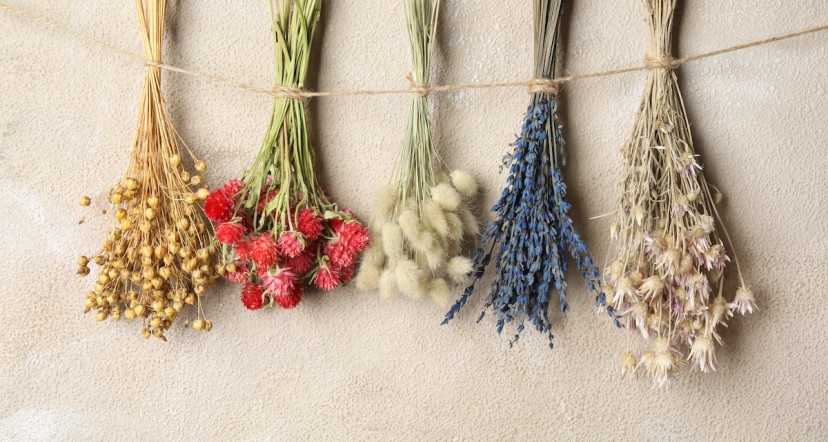Your cart is currently empty!

How to dry flowers?
There are many different processes for drying flowers, but each process slowly and evenly removes the moisture from your flowers while preserving the color and condition of the flower. Here are five methods for drying flowers.
- Air drying: Air drying is the most traditional method of drying flowers. To air-dry flowers, you bind a series of small bouquets and hang them upside down. This method takes two to four weeks to complete because it takes plenty of time for flowers to fully dry without some sort of accelerant. Air drying is great for making dried bouquets for table centerpieces or decorative accents around your home.
- Microwaving: Microwaving your flowers involves heating them in a microwave with a bowl of desiccant—like silica gel or cat litter—to help dry the plant without shriveling. The microwave method allows you to see the results within days rather than weeks and is best for flower heads or smaller plants rather than full bouquets.
- Desiccant method: You can simply submerge your flowers in a bed of desiccant—like kitty litter or silica gel—and let them sit for a few weeks to remove their moisture. This method takes longer than microwaving your flowers, but it can preserve their color more effectively.
- Baking: Baking your flowers to dry them involves putting your blooms in the oven at a low temperature and baking them for a couple of hours. This is a quick method for drying flowers, but you may lose a lot of petals in the process. Also, this method is not the best for preserving the color of your flowers.
- Pressing: Pressing flowers involves using heavy objects to squeeze the moisture out of a flower. Pressing is an effective way to dry flowers for crafts, artwork, or stationery.
Comments
One response to “How to dry flowers?”
您好,这是一条评论。若需要审核、编辑或删除评论,请访问仪表盘的评论界面。评论者头像来自 Gravatar。